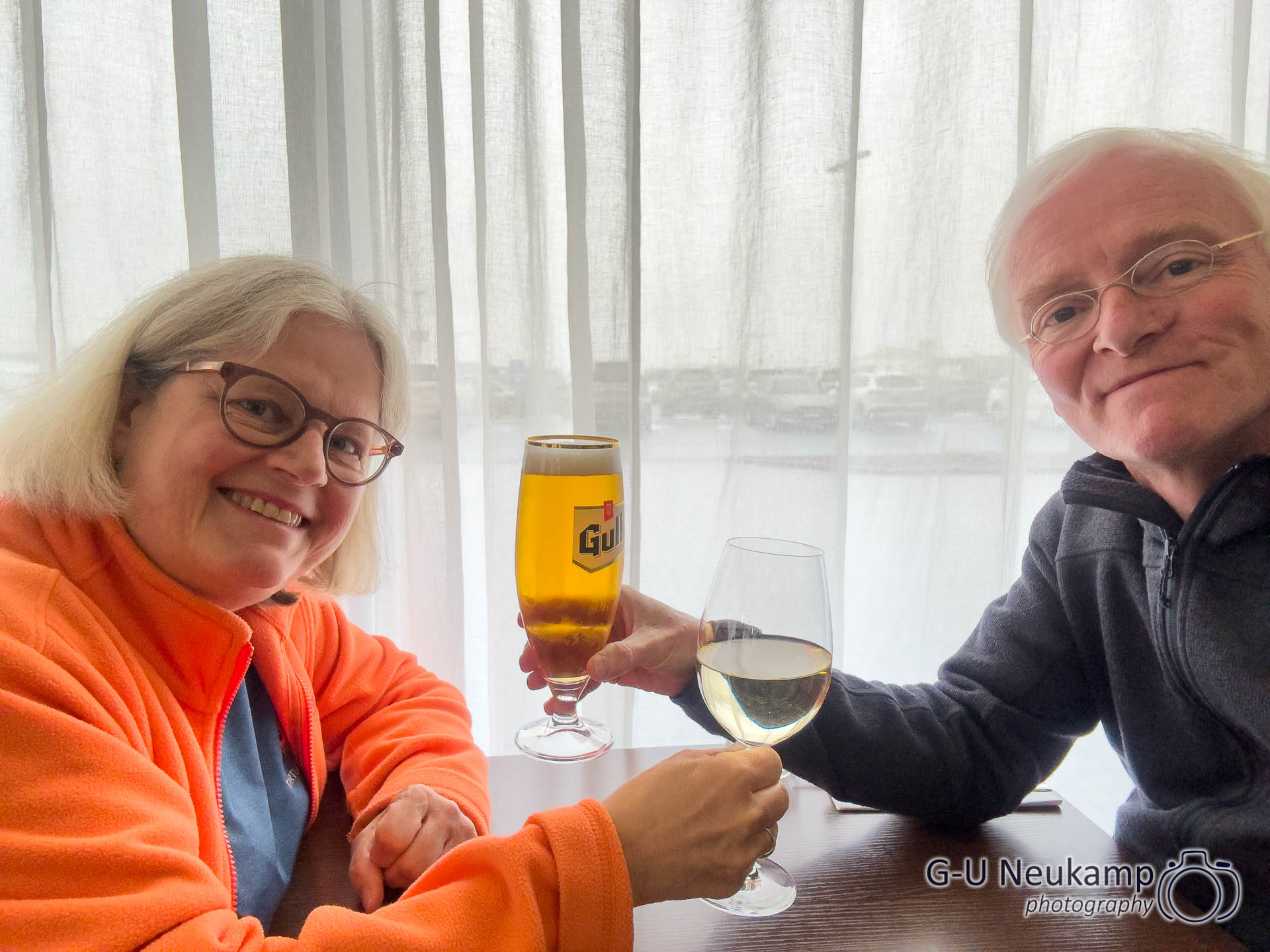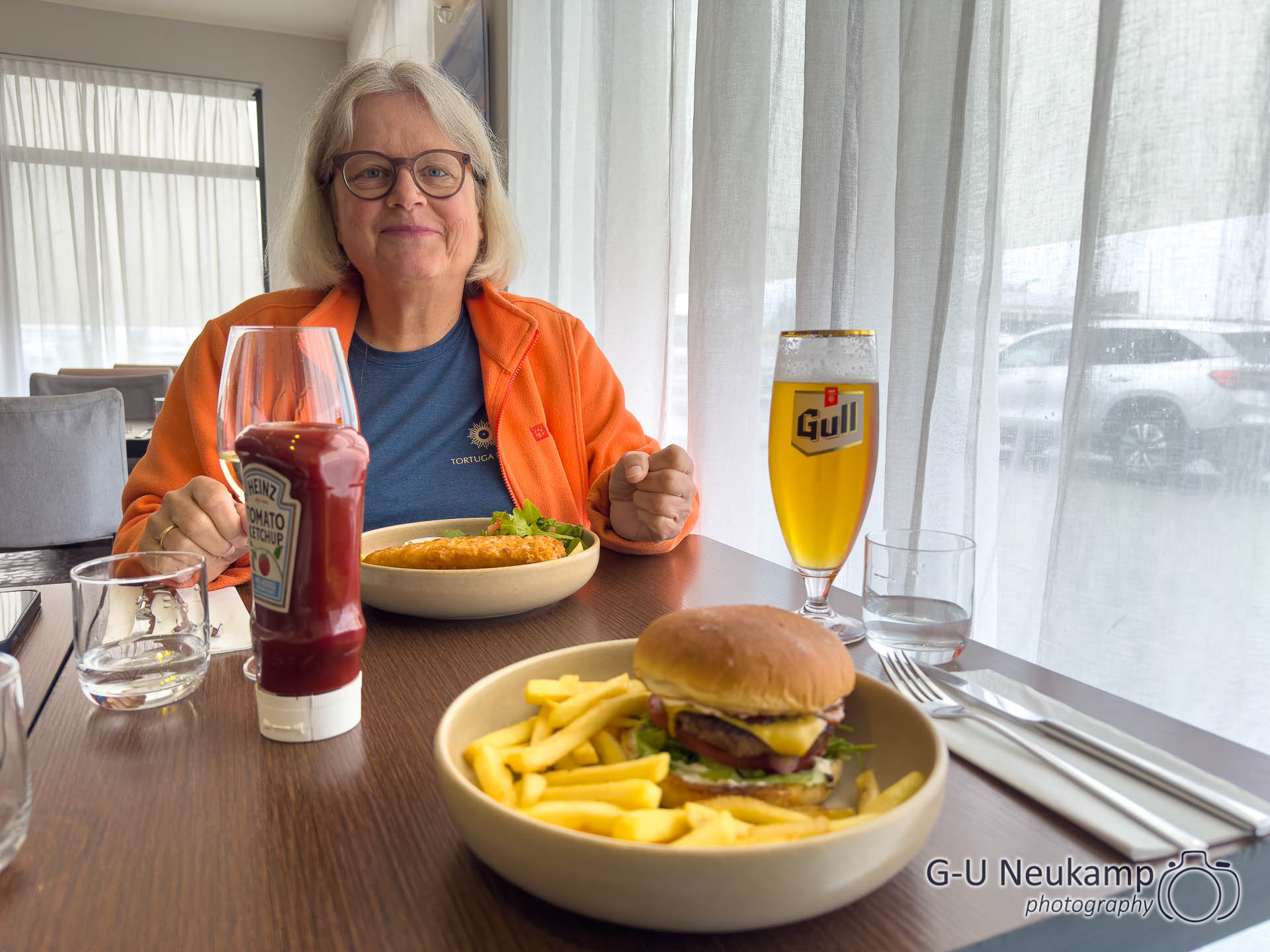June 20th, 2025 - last day of travel
After breakfast, we packed everything up, emptied the camping toilet cassette one last time, and set off on a final tour along the coast until we had to return the camper. Here we first discovered another pretty church, Hvalsneskirkja:
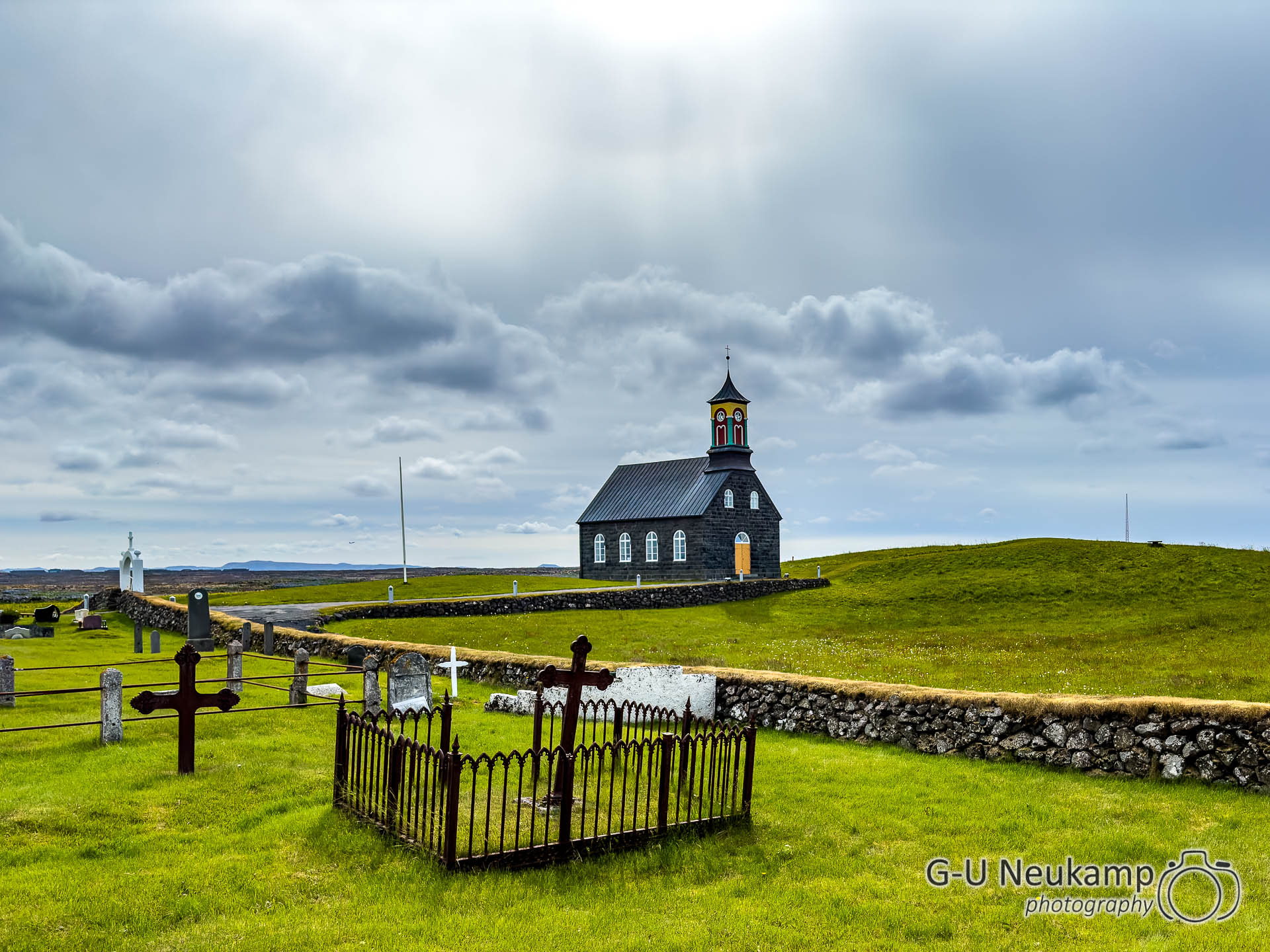
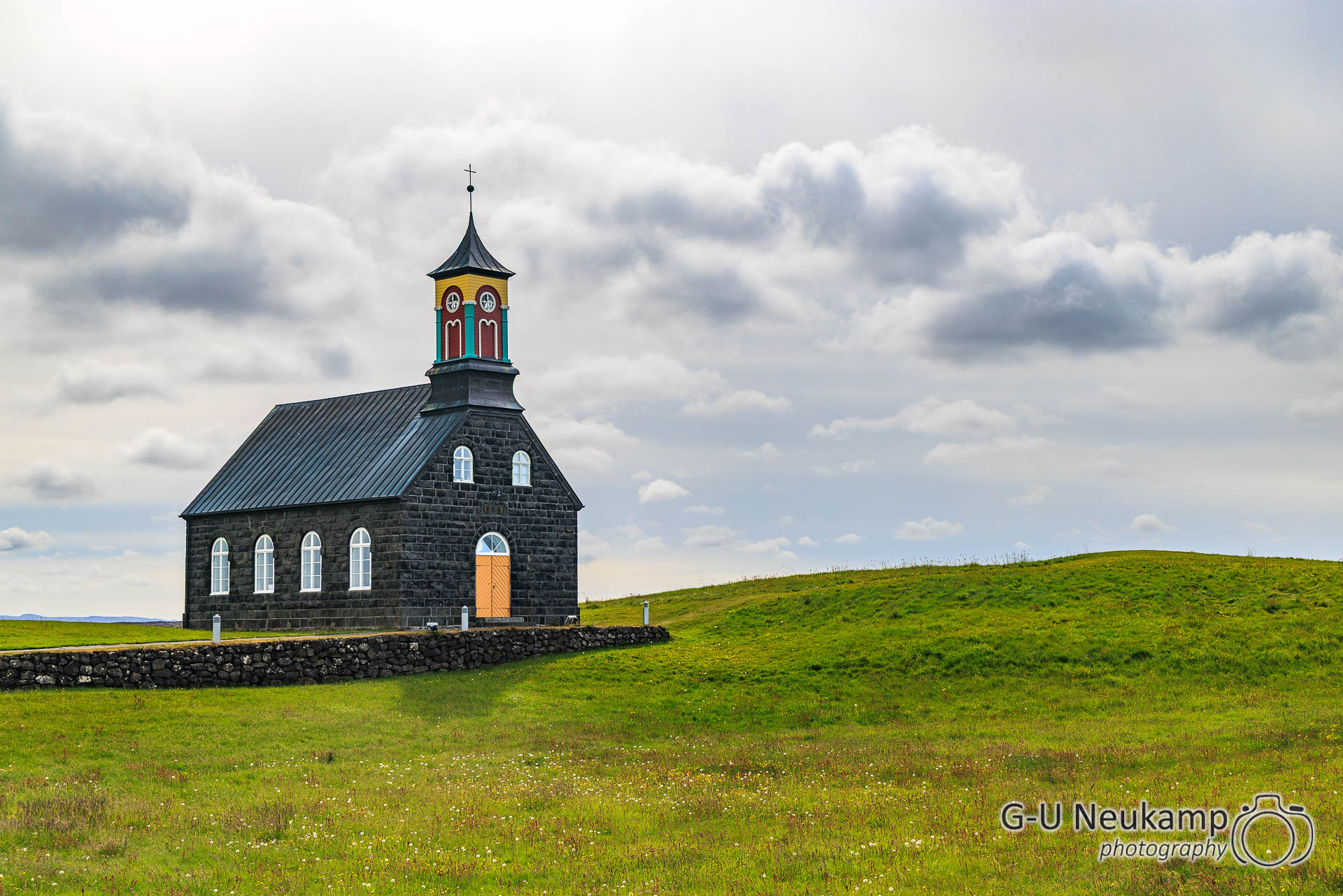
We continued along the coast. Since we still had a few hours to spare, we visited all the sights that Google Maps showed us in the area. Here we see another orange lighthouse, Stafnesviti. The striking color somehow makes sense.
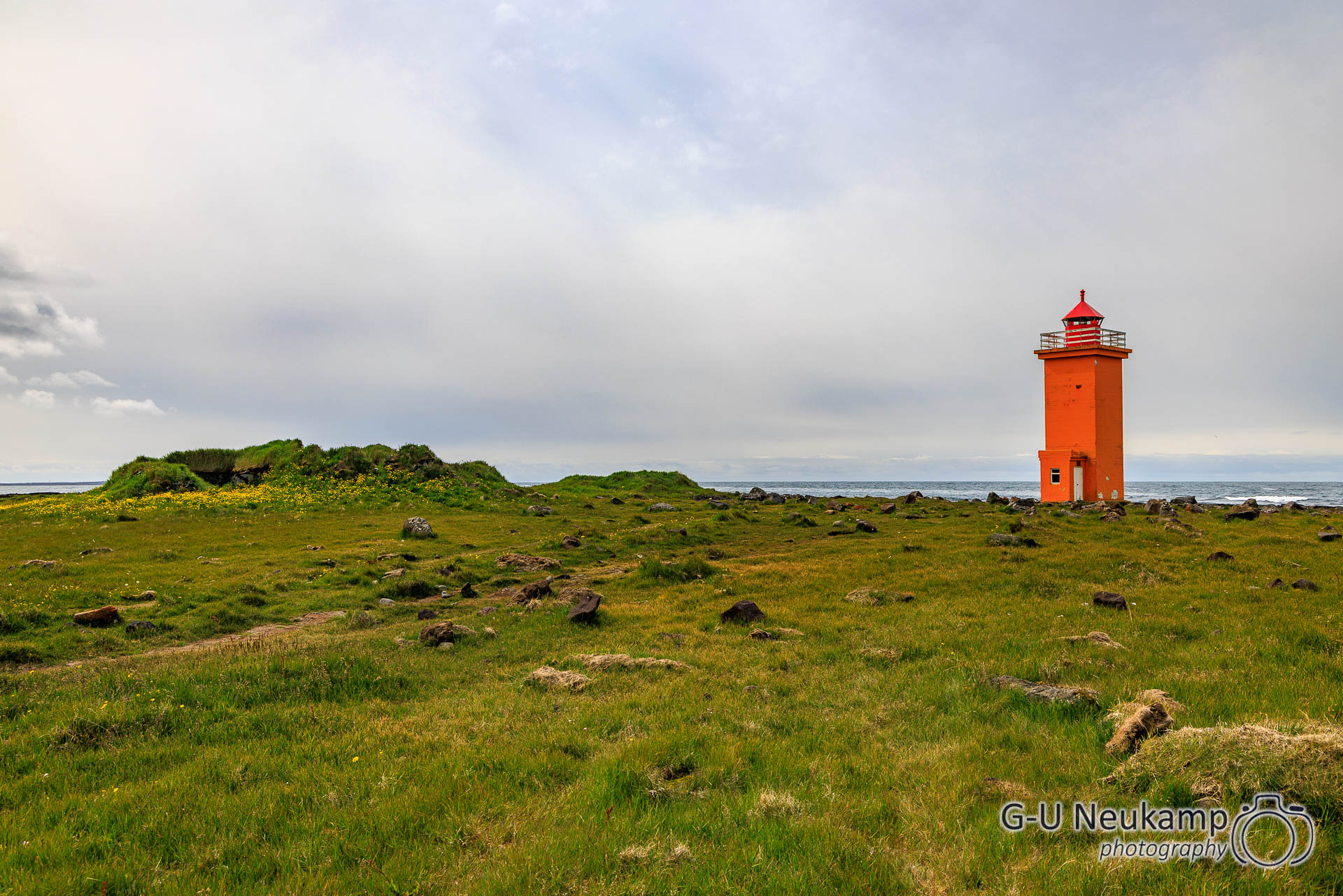
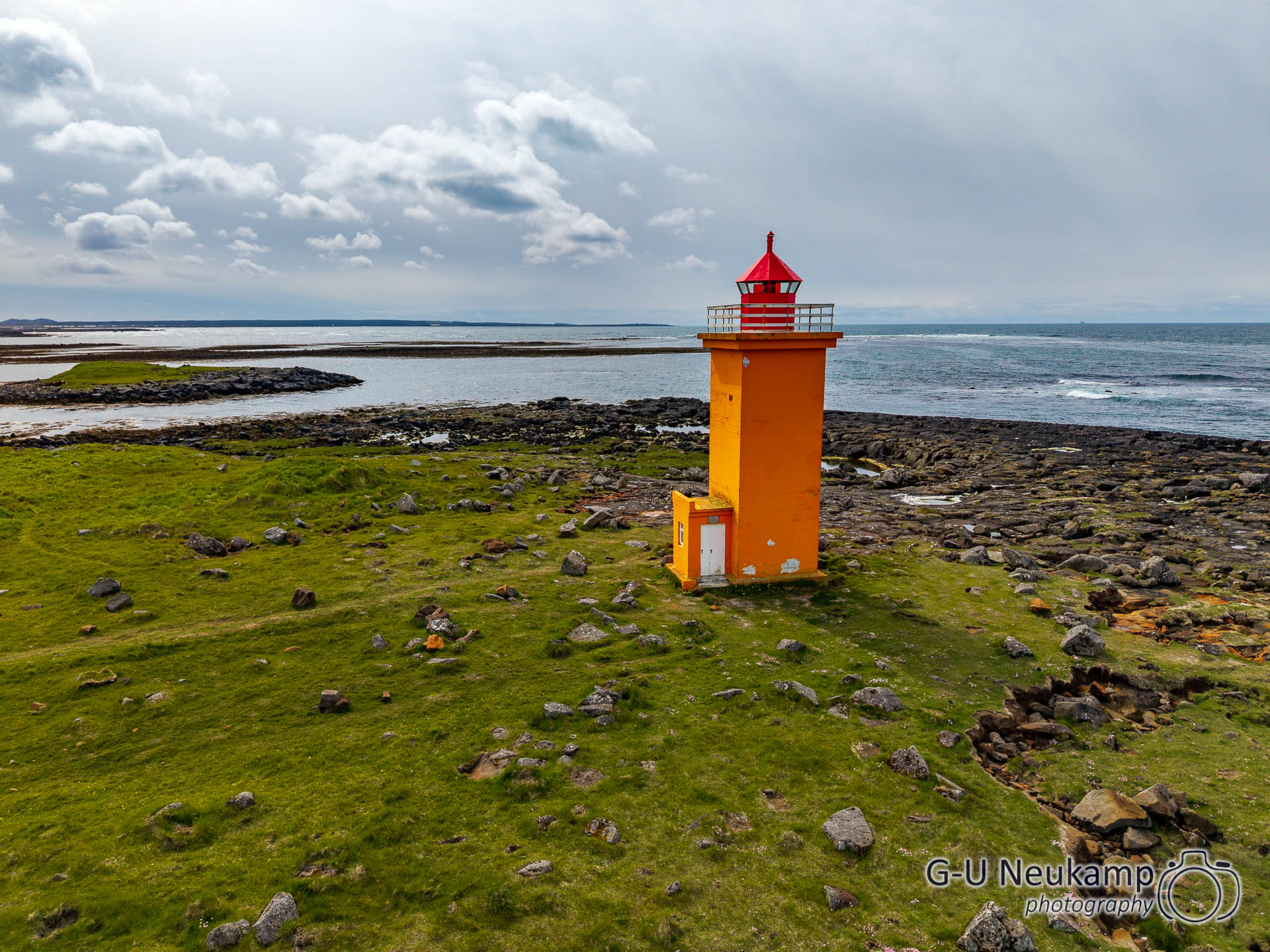
The next spot, Galgar, is said to be steeped in history. It has something to do with the first settlers, Odin, and Valhalla. We didn’t quite understand it. The area was deserted, with bright blue lupines everywhere - but somehow the spot had something special about it:
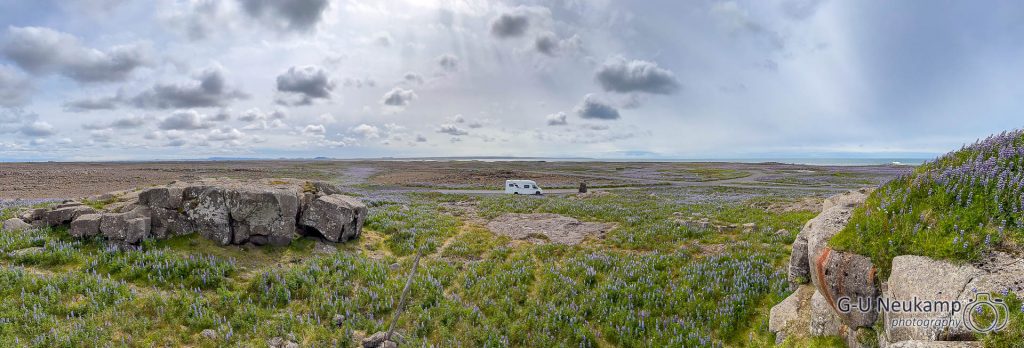
A little further on, we came to the Bridge Between Continents. This is where the Eurasian and North American plates are drifting apart. The bridge connects the two - and will probably have to be extended further and further in the future 😉
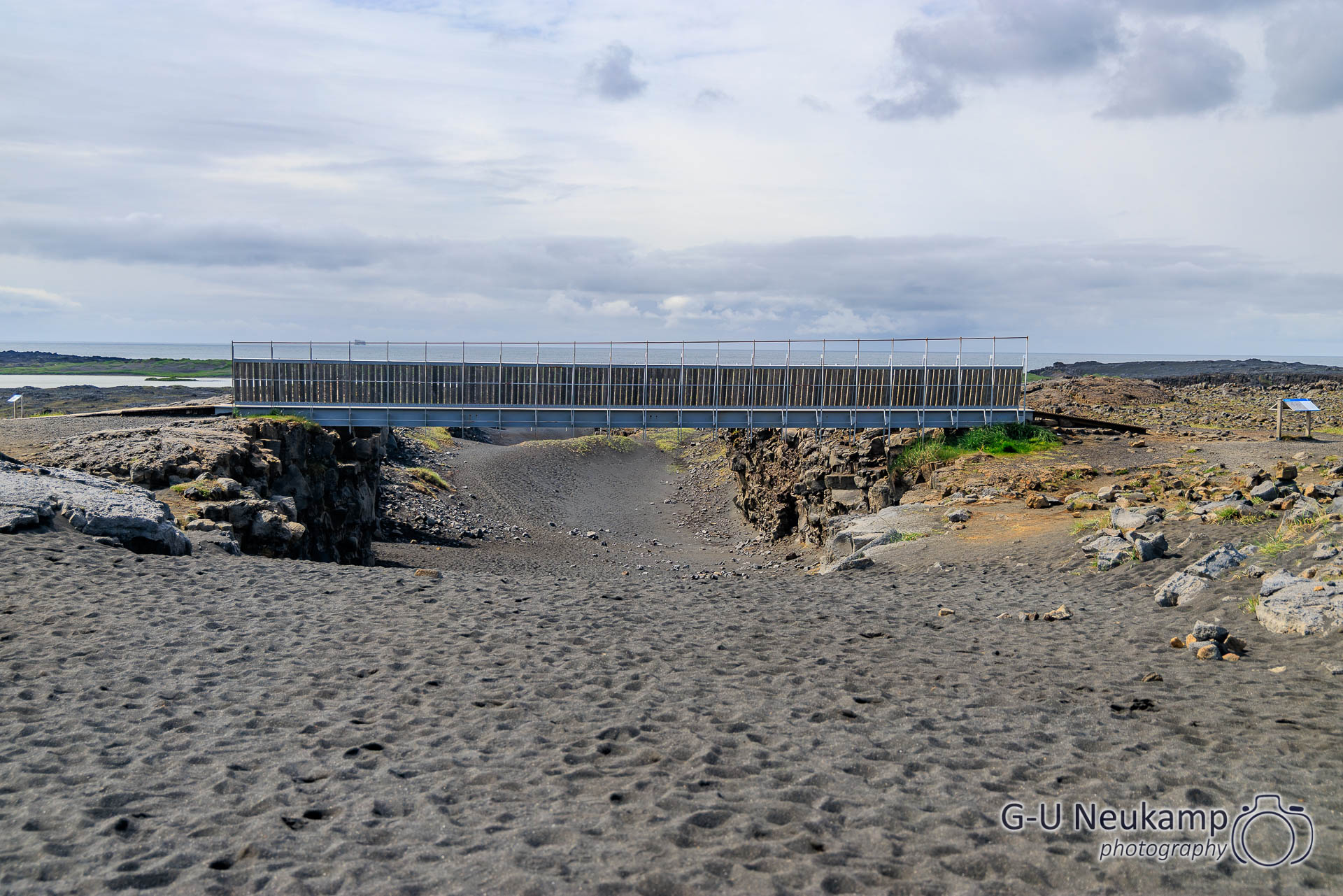
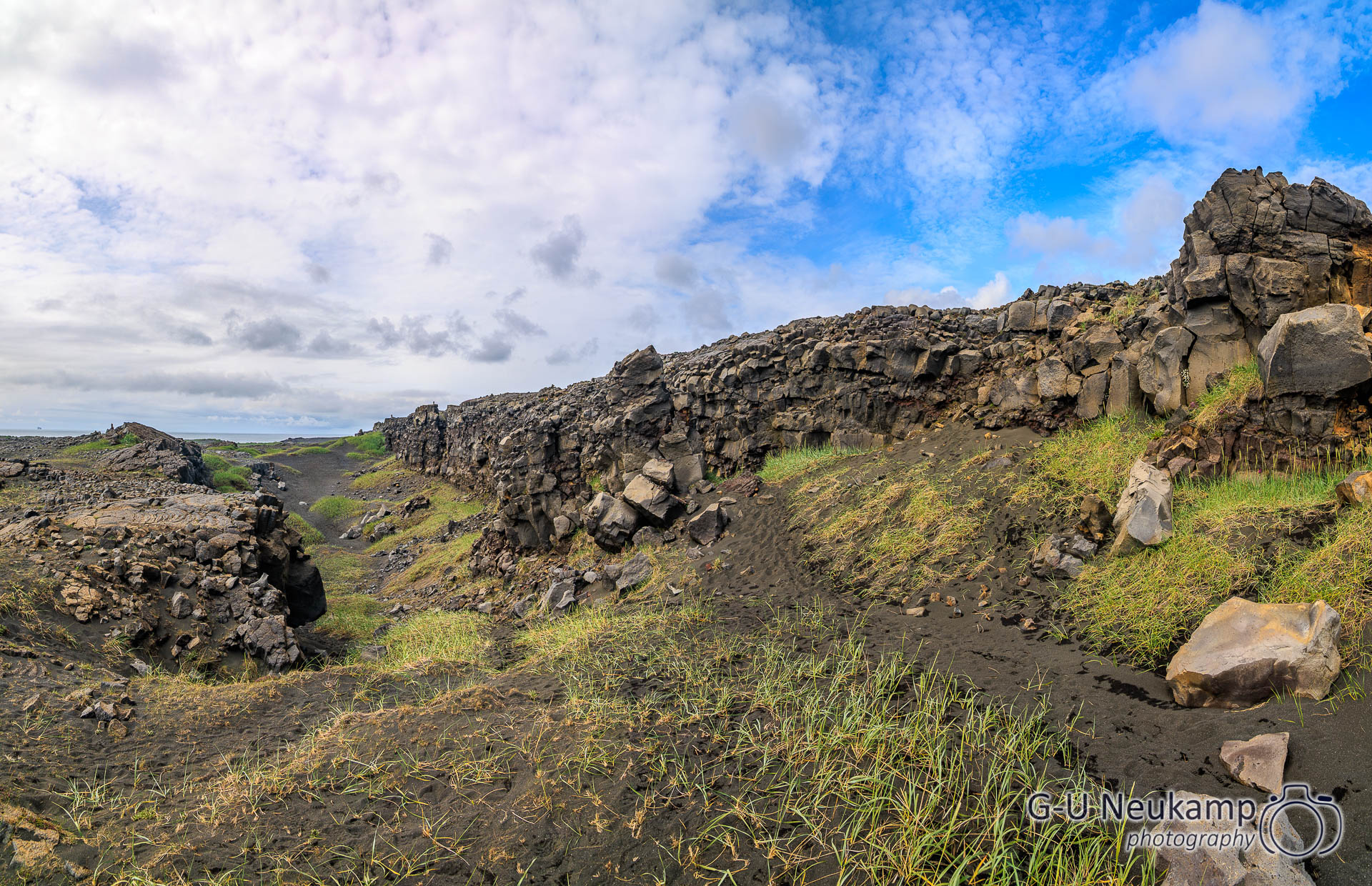
As it is located close to Reykjavik, many day tourists gathered here again. When a large bus finally arrived and the place filled up with crowds of tourists, we drove on. We then continued east towards Grindavik.
First, we made a detour to the high-temperature area of Gunnuhver. Even from a distance, you could see the clouds of steam.
Gunnuhver is an active geothermal field at the western end of the Reykjanes Peninsula. Temperatures of over 300 °C prevail beneath the springs. Mud pools and fumaroles are visible, fed by rainwater, while heated seawater collects in fissures and caves deep below. Increased activity has been observed since 2006, including new mud pools, minor eruptions, and explosions. In 2008, a new crater formed, the development of which can still be monitored.
The geothermal energy is used in the nearby Suðurnes power plant. Initially, a 0.5 MW turbine was used to generate electricity for local industrial needs. A new power plant with two 50 MW steam turbines has since been built, which went online in May and July 2006, respectively. This results in a total output of 100 MW.
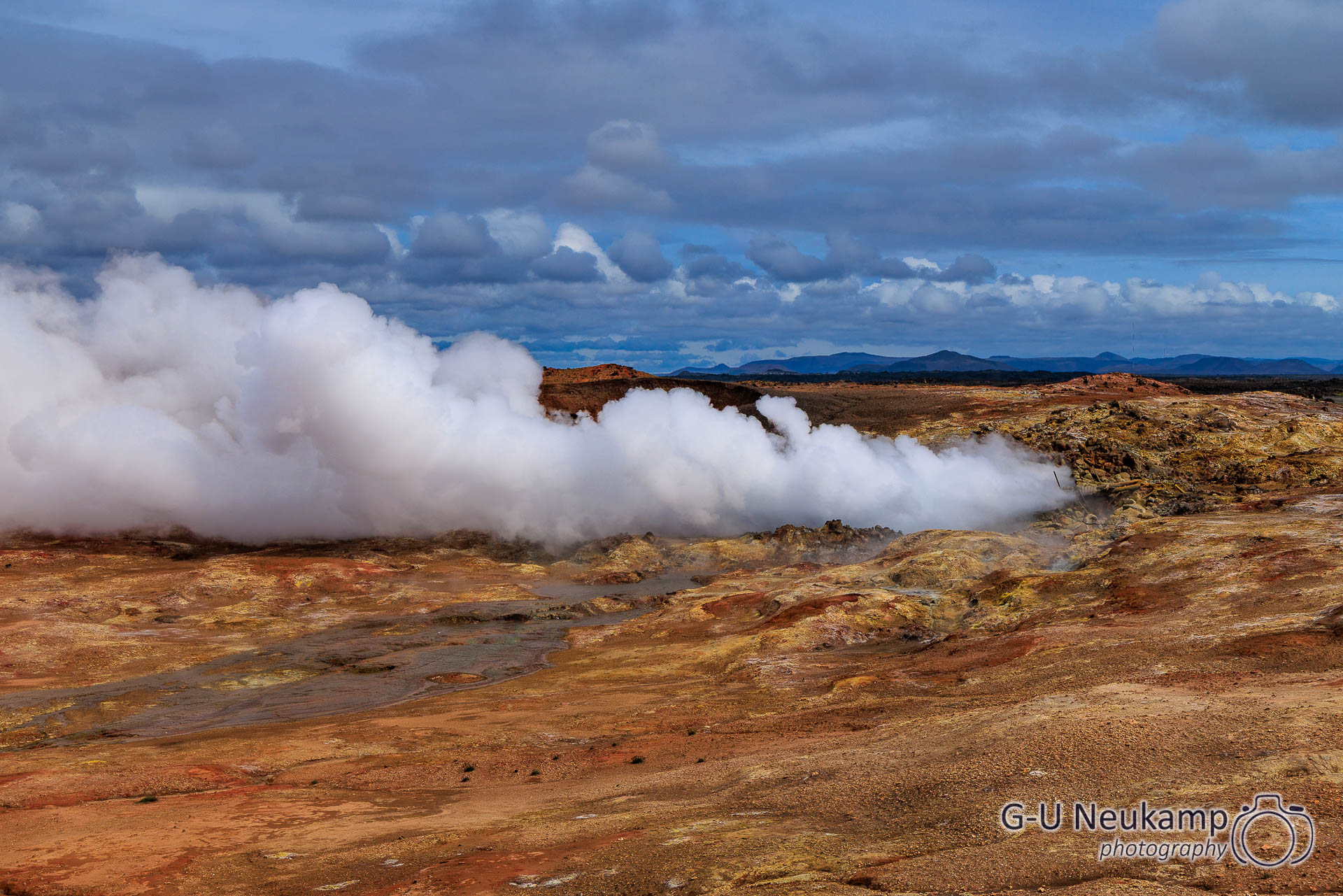
We then drove to one last lighthouse in the immediate vicinity, the Reykjanes Lighthouse.
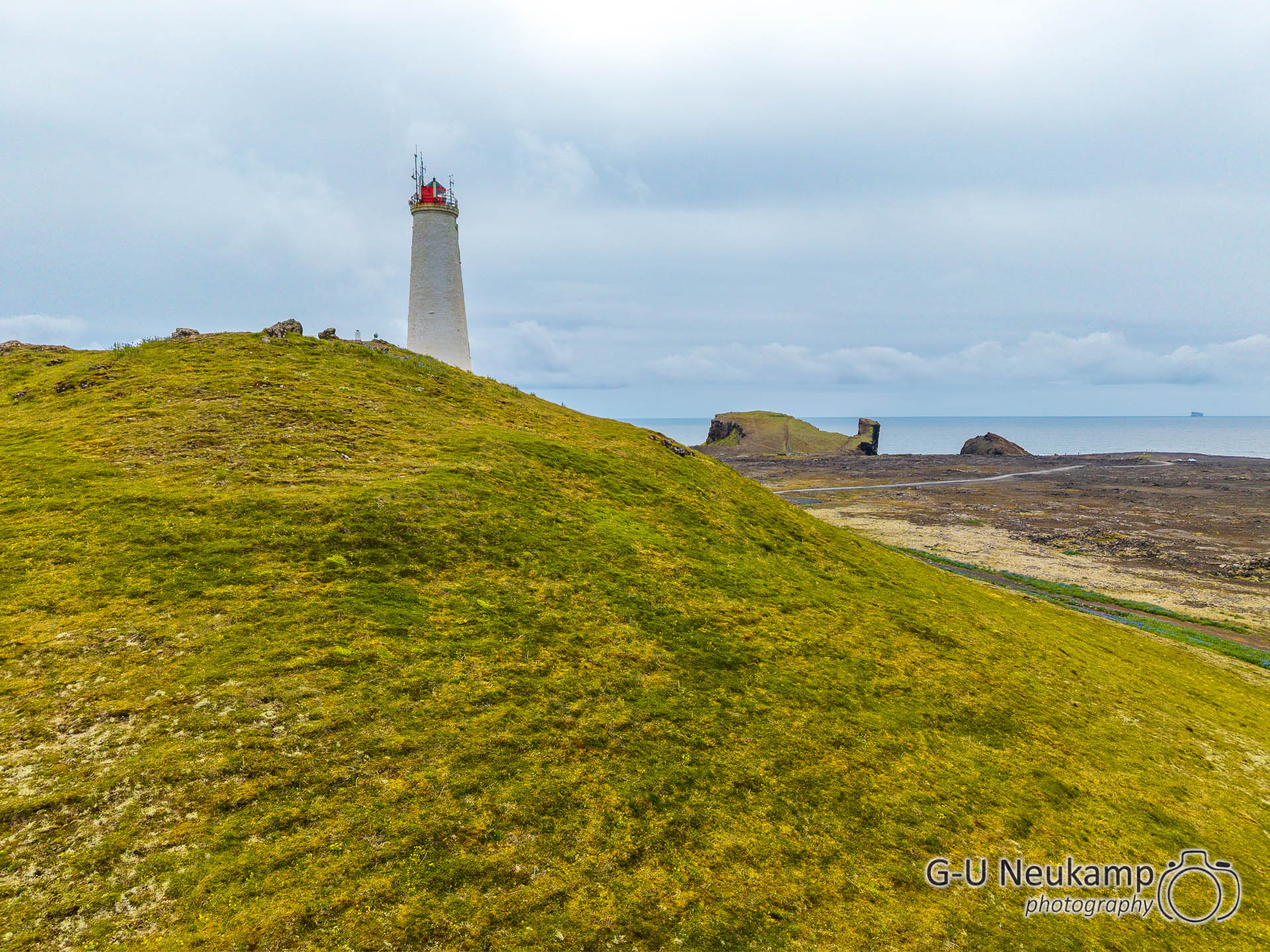
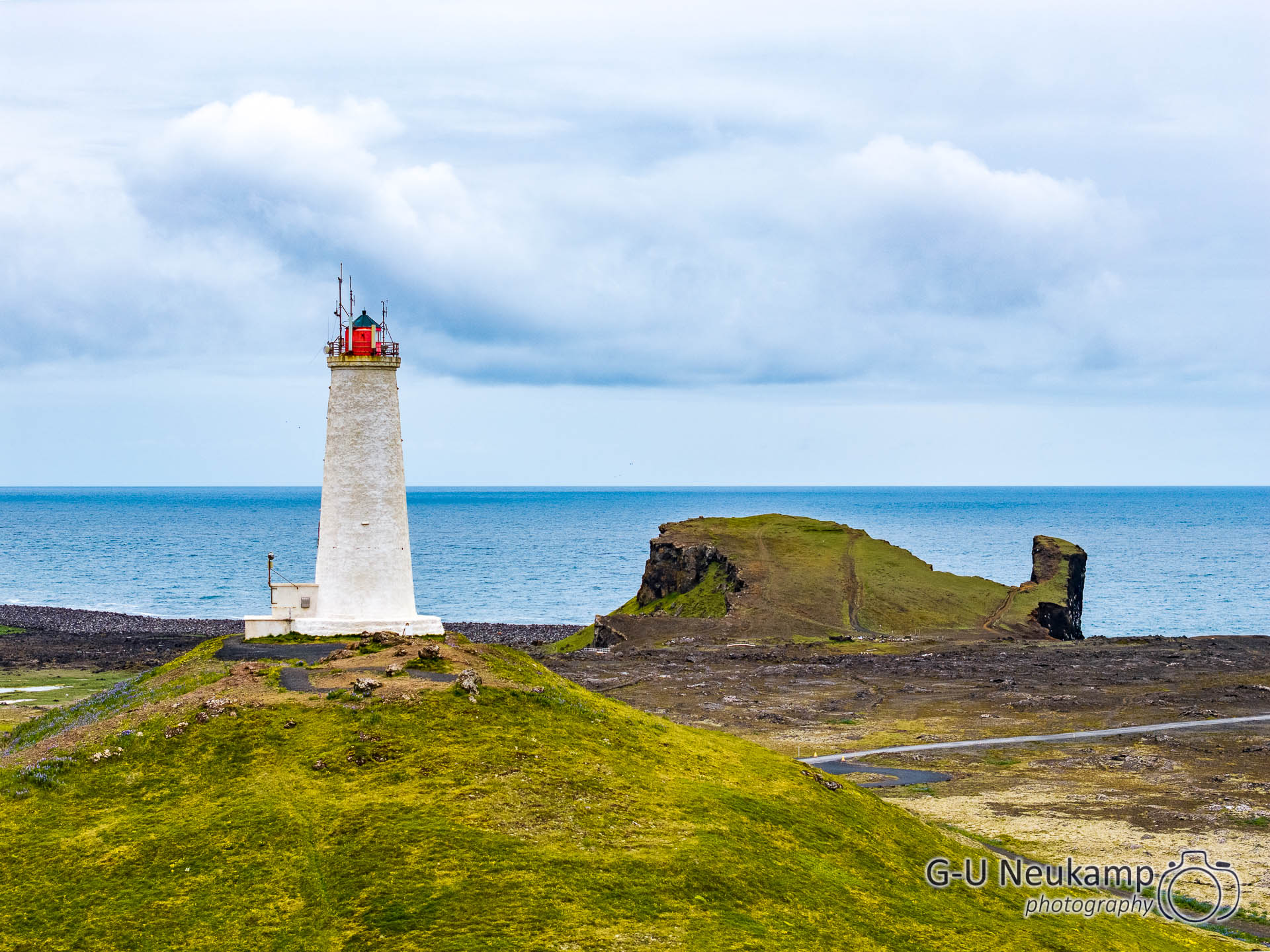
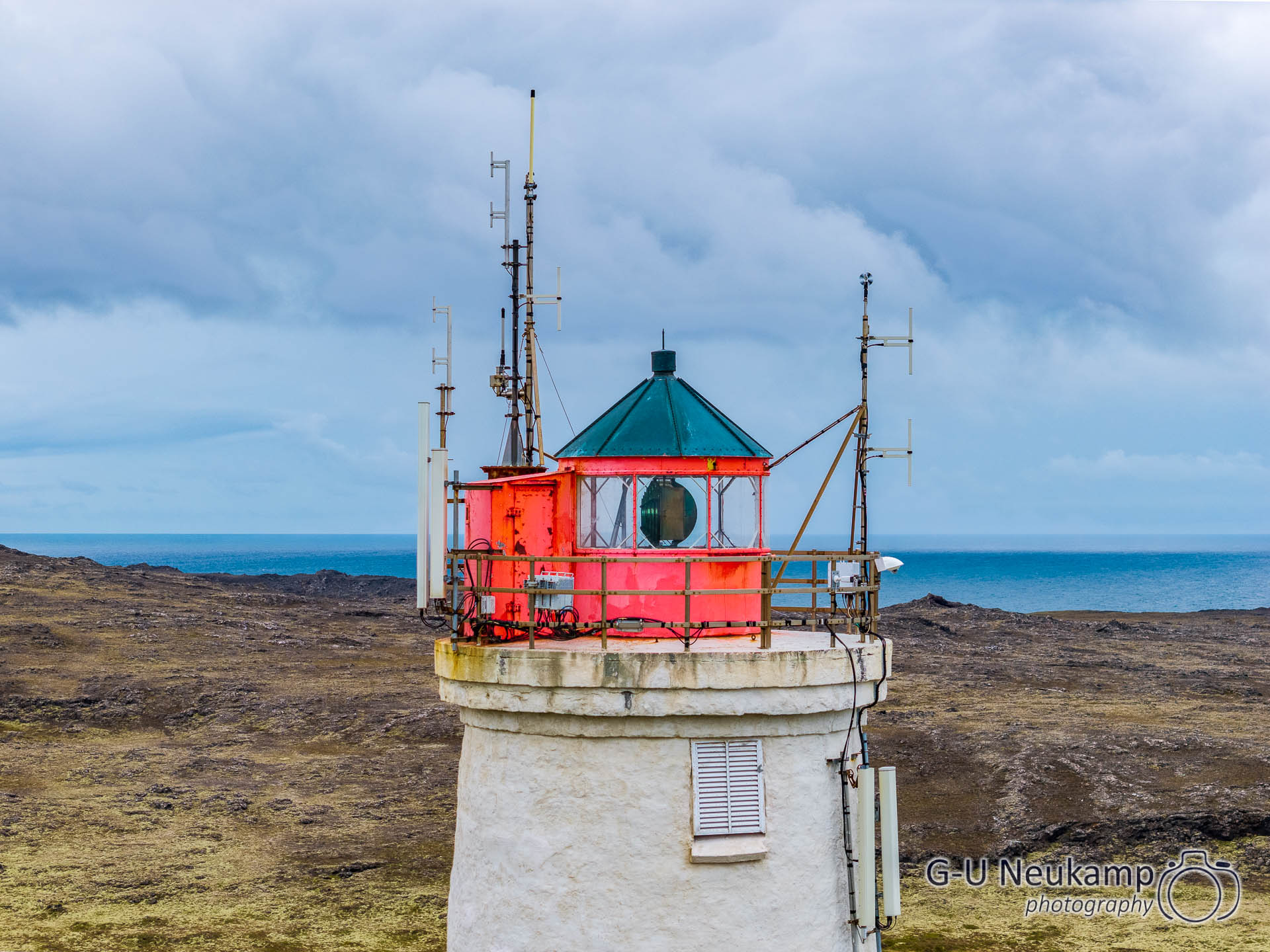
Afterwards, we continued our journey towards Grindavik. On the way, the volcanic activity was still very evident. Some sections of the road had been completely repaved, as they had been partially covered by lava in 2023. Next to the road, there were miles of bare, black, cooled lava rock. There was hardly any vegetation.
Several large construction machines stood in front of Grindavik, piling up a huge wall of rocks in front of the town to protect it from new lava eruptions. Grindavik made international headlines in 2023 when a volcanic eruption forced the town to be evacuated.
Grindavík -sounds peaceful, almost poetic. But in this small port town, idyll and elemental forces lie close together. Located about 50 kilometers southwest of Reykjavík, Grindavík has lived off fishing for centuries. A busy port, a few thousand inhabitants, a tradition of seafaring – that’s how life here looked for a long time.
Since the end of 2023, however, the picture has changed dramatically. The town was repeatedly shaken by earthquakes, cracks opened up in the ground, and finally lava erupted just a few kilometers away. On November 11, 2023, Grindavík was evacuated in the middle of the night – in just three and a half hours, all the inhabitants left their homes.
In January 2024, the lava finally flowed to the outskirts of the town and destroyed several residential buildings. Protective barriers prevented the worst, but not everything. Since then, access to the town has been restricted and its future remains uncertain.
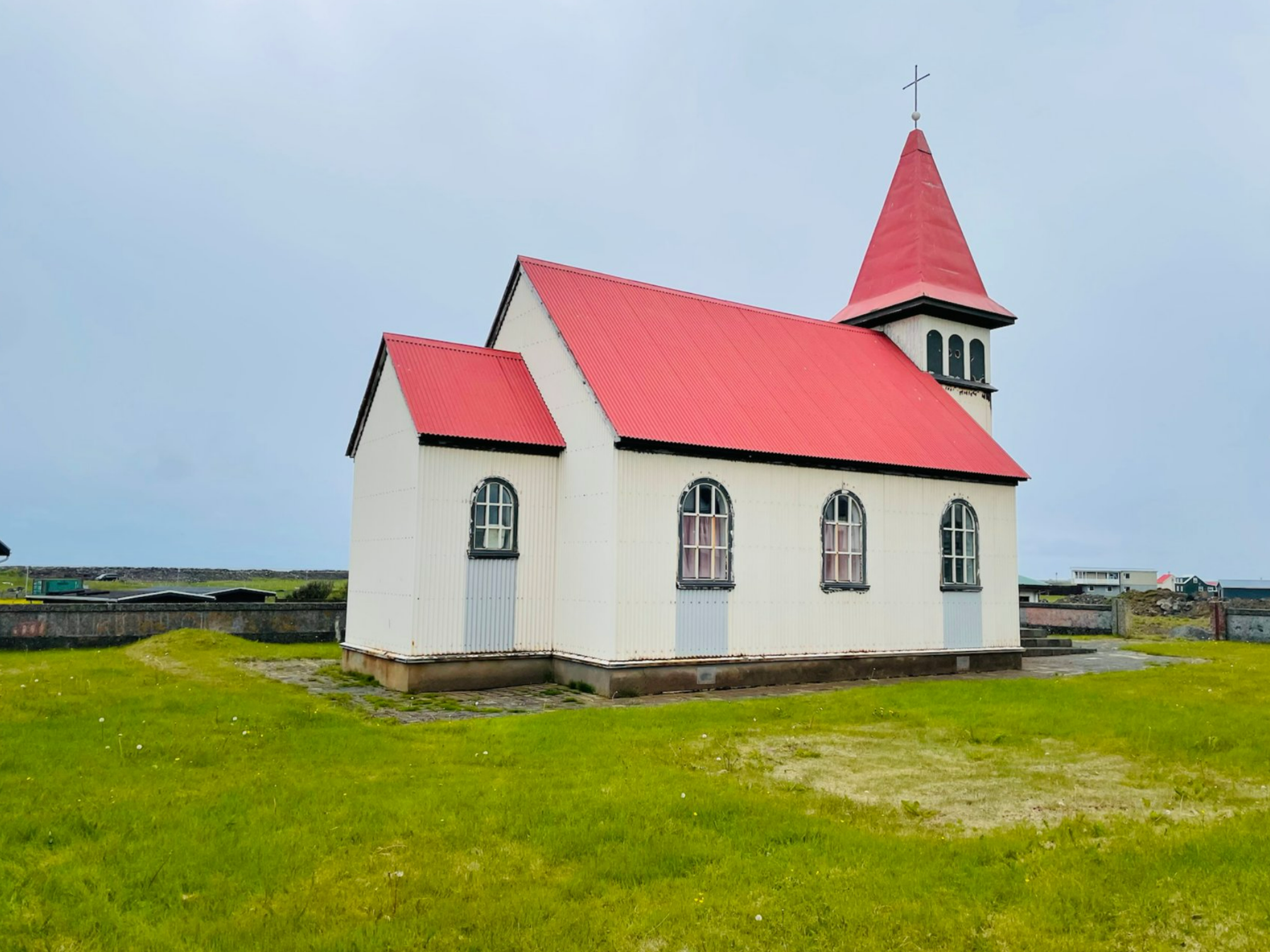
Above you can see another picture of the little church in Grindavik. Then it was time to return our camper. So we drove back to Keflavik and filled up the fuel tank one last time. Returning the camper to Europcar went smoothly, and we were then taken from there to the Aurora Airport Hotel, located right at the airport. We will spend the night here, but it will be a short one, as we have to be at the airport shortly after 5:00 a.m. Our flight to Frankfurt departs at 7:20 a.m.
The Airport Hotel lived up to its name, located within walking distance of the airport, about 200 meters away. We had our last dinner in Iceland at the hotel. It was only the second time we had eaten outside our camper during this trip.
